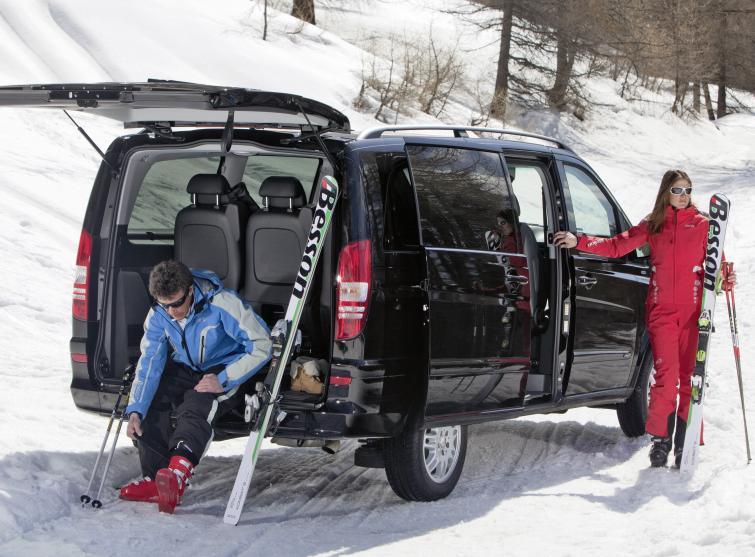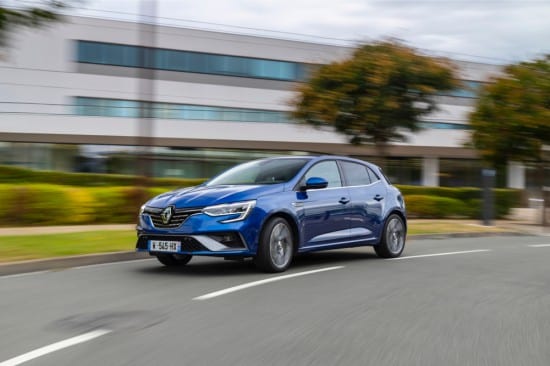
Skiing abroad - traffic rules, mandatory equipment. Guide
 Before traveling abroad, it is worth clarifying in which countries it is mandatory to drive on winter tires, when to use chains, and where studded tires. And also remember the rules of safe driving in the snow.
Before traveling abroad, it is worth clarifying in which countries it is mandatory to drive on winter tires, when to use chains, and where studded tires. And also remember the rules of safe driving in the snow.
Rules for safe driving on snow
You must remember that even the best winter tires, chains or spikes will not protect us from an uncontrolled skid if we do not follow the basic safety rules and driving technique. “When driving on snow or on slippery surfaces, we do it slowly, carefully, smoothly on the half-coupling,” says Jan Kava, a driving instructor from Opole. - Only when the car is already rolling can you increase the speed. We must also be careful when braking. In winter, even if the roadway is black, it may be covered with ice. Therefore, when approaching, for example, an intersection, it is worth starting braking much earlier.
“In cars without ABS, we don't press the brake pedal to the floor,” warns Jan Kawa. “Then the car slides on a slippery surface and we cannot control it. Important! We brake by pulsating pressing and releasing the brake pedal. Then the car will be controlled and stop much faster. In winter, especially in the mountains, the engine and gearbox are useful for speed control. On steep descents, take your foot off the gas pedal and brake with the engine. If the vehicle continues to pick up speed, downshift.
Overtaking - how to do it safely? when you can right
It's worth keeping your cool while avoiding the obstacle you spotted at the last minute. “Don’t make sudden movements with the steering wheel or brake,” advises Kava. We brake so as not to block the wheels. In an emergency, if we see that we cannot stop, it is better to roll into a snowdrift than to collide with another car. – When the roads are slippery, it is worth keeping a greater distance from the car in front, says Jan Kava. - When his driver starts to brake hard, we will have more time to stop the car.
And practical advice at the end. In heavy snowfall, it is worth carrying a shovel in the trunk, with which it will be easier for us to get out, for example, from a snowdrift if we have already fallen into it. For long trips, it does not hurt to take a thermos with a hot drink and fill up the car with fuel. “If we get stuck somewhere too well, we can warm up with a drink and turn on the heating without fear that we will run out of fuel,” Jan Kava finishes.
In which country is the custom. This saying fits very well into the rules of the road. Therefore, before going abroad, let's check what awaits us there.
Austria
In this alpine country, winter tires must be used from November 1st to April 15th. They must be installed on all four wheels. The tread depth must be at least 4 mm. In the event of very heavy snow or icy roads, the use of chains on the drive wheels is mandatory. Road signs remind of this. Note: speed limit with chains is 40 km/h. However, the use of studded tires is allowed from 15 November until the first Monday after Easter for vehicles up to 3,5 tonnes.
Due to weather conditions, their use may be extended. Permissible speed with studded tires: on motorways - 100 km / h, outside settlements - 80 km / h. On the back of the car should be a plate with the name "studded tires". Drivers who do not follow the rules can be fined 35 euros. If they pose a danger to other road users, the fine can be up to 5000 euros.
The editors recommend:
Lynx 126. this is what a newborn looks like!
The most expensive car models. Market Review
Up to 2 years in prison for driving without a driver's license
Czech Republic
From November 1 to the end of April, on certain sections of mountain roads in the Czech Republic, it is mandatory to drive only with winter tires or chains. - It is worth preparing for this, because the police can fine up to 2,5 thousand fines for the lack of appropriate tires. CZK (about PLN 370), said Josef Liberda from the road department of the municipal government in Jeseník, Czech Republic. The need to use winter tires is signaled by a blue road sign with a snowflake and a car symbol. According to the regulations, winter tires must be fitted on four wheels, and their tread depth must be at least 4 mm (passenger cars) and 6 mm (trucks). On some roads, signs indicating the use of winter tires are only deployed by road services in bad weather.
If there is no snow and the sign is complicated, then you can even ride on summer tires. Attention. Snow chains may only be used on roads with sufficient snow to protect the road surface. The use of studded tires is prohibited.
Winter tires are required on these roads:
Pardubice region
– I / 11 Jablonne – intersection Cenkovice – Chervena Voda
– I/34 “Vendolak” – Police Cross II/360
- I / 34 cross II / 3549 Rychnov - Borova
– I/35 Grebek – Kotslerov
- I/37 Trnova - Nova Ves
Olomouc region
– I / 35 Mohelnice – Studena Louka
– I/44 Kouty – Chervenogorsk village – Domasov
– I/46 Šternberk – Gorni Lodenice
- I / 60 Lipova Lazne - Vapenne
Central Bohemian Region
– D1 Locket – cross border
– D1 Prague – Brno (from 21 to 182 km)
Region Vysočina
– State border D1 – Velka Bites
Ustinskiy district
– I/8 Dubi – Chinovets
– I/7 Chomutov – Mount St. Sebastian
Moravian-Silesian region
– I/56 Ostravice – Bela – state border
France
Driving on winter tires is prescribed by road signs. Chains and studded tires are allowed. In the first case, the maximum speed is 50 km/h. The latter requires special marking of the vehicle, and the maximum speed under any conditions cannot exceed 50 km/h in built-up areas and 90 km/h outside of it. Studded tires can be driven from 11 November until the last Sunday in March.
Germany
In this country, the obligation to drive with winter tires has been in effect since 2010, when there is ice, snow and slush on the road. We drive on winter tires according to the rule: “from O to O”, that is, from October (October) to Easter (Ostern). Failure to comply with this provision will result in a fine of between 40 and 80 euros.
Wheels can be mounted on wheels if the traffic situation requires it. The maximum speed in this case is 50 km/h. However, in Germany the use of studded tires is prohibited. The exception is within 15 km from the Austrian border.
Slovakia
The use of winter tires is mandatory in Slovakia from 15 November to 15 March if the roads are snowy, slushy or icy. Cars up to 3,5 tons must be equipped with all wheels. Drivers may also use chains, but only when the road is covered with sufficient snow to protect the pavement. In Slovakia, the use of studded tires is strictly prohibited. Driving without winter tires - a fine of 60 euros under certain conditions.
Switzerland
See also: Mazda CX-5 editorial test
Driving with winter tires is optional, but recommended. In addition, a driver who obstructs traffic due to his inability to adapt to weather conditions is punished with a fine. Snow chains must be installed in regions where signs require it. In Switzerland, studded tires can be used from 1 November to 30 April if the weather or road conditions require it.
Each cantonal government can change the period of use of studded tires, especially in the mountains. Vehicles/vehicle combinations up to 7,5 tonnes GVW can be fitted with studded tyres. The length of the spikes should not exceed 1,5 mm. A foreign-registered vehicle with studded tires may travel in Switzerland, provided such equipment is permitted in the vehicle's country of registration.
Włochy
Winter tires are also required by law in some parts of Italy. For example, in the Val d'Aosta region, this obligation (or chains) is valid from 15 October to 15 April. However, in the Milan area from November 15 to March 31 - regardless of the prevailing weather conditions.
Snow chains must be used on certain roads and in certain weather conditions. Where conditions permit, studded tires are also permitted in Italy on vehicles up to 3,5 tonnes. The police have the right, depending on the prevailing weather, to introduce a temporary order for driving on winter tires. Signs indicate this. The penalty for non-compliance with these requirements is 79 euros.
